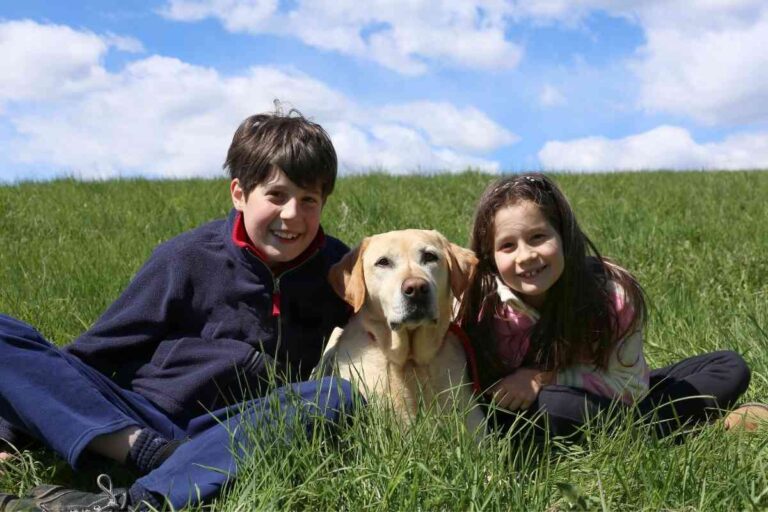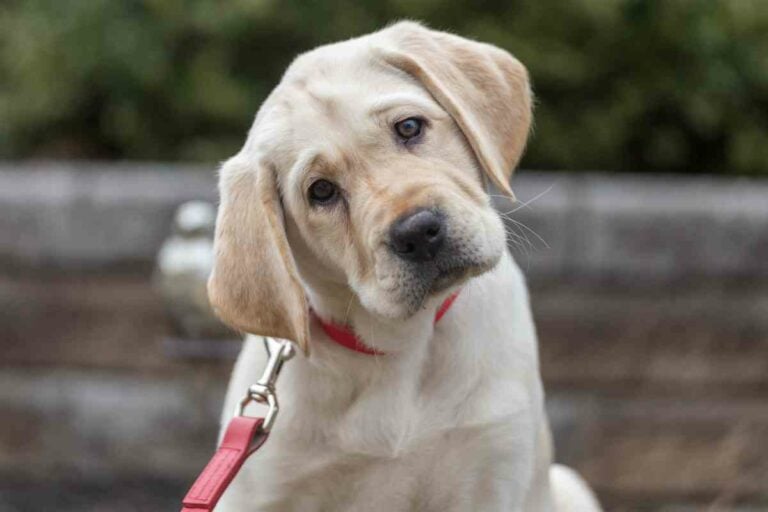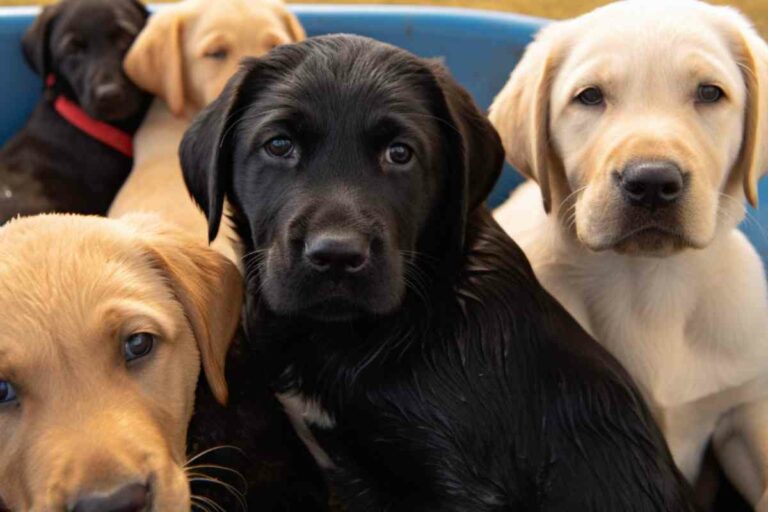Labrador Retrievers as Working Dogs: A Comprehensive Guide
Labrador Retrievers have a long history of being used as working dogs. Originally bred as hunting dogs, they were trained to retrieve game for their owners.
Today, Labradors are used for a variety of different jobs, including as service dogs, police dogs, search and rescue dogs, and therapy dogs. Their intelligence, trainability, and loyalty make them a great choice for these types of roles.
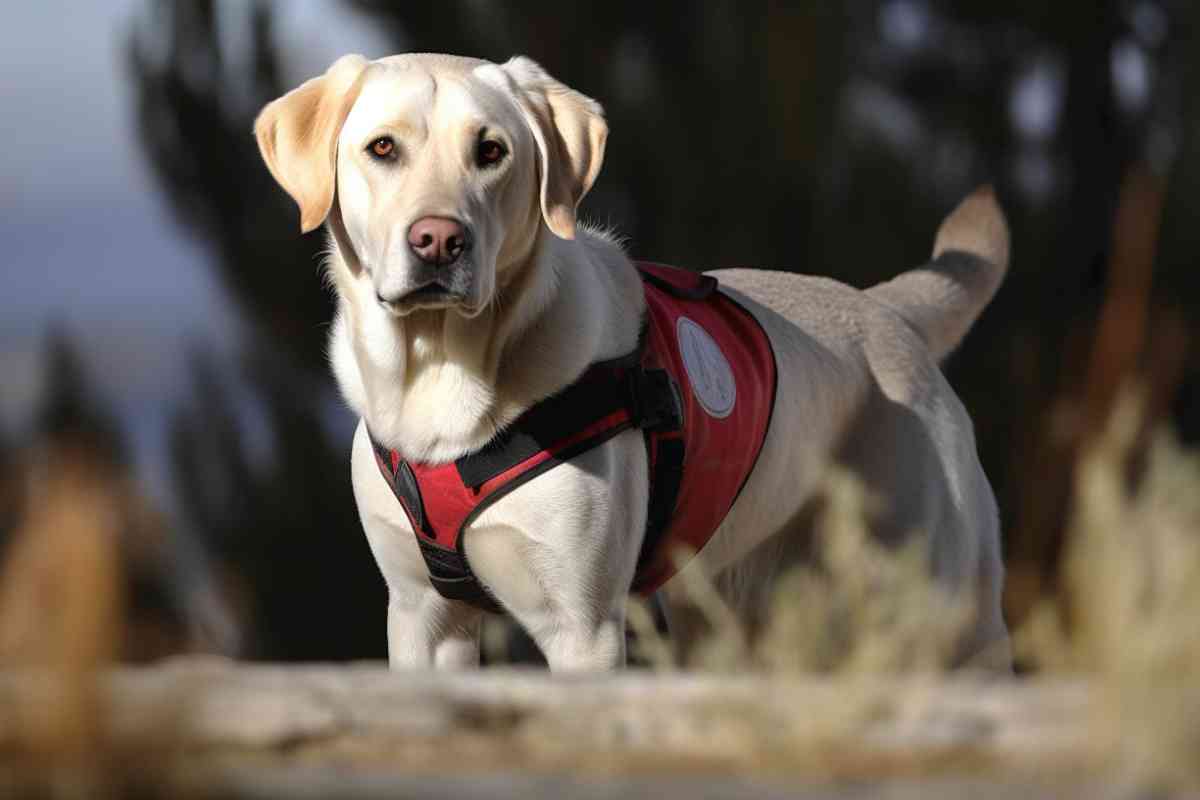
What are Labradors as working dogs?
Labradors excel in various roles as working dogs. Their acute sense of smell, trainability, and steady temperament make them ideal for police and military duties in scent detection and search operations. Their natural retrieving instincts and adaptability have made them standout choices in hunting a variety of game. Their compassionate nature, combined with their intelligence, positions them as the quintessential service dogs, aiding individuals with disabilities and offering emotional support.
Wondering how to find the right working Lab for you? Labrador Retriever Clubs and Associations can help.
You can also rescue a Lab to train into a great hunting companion. Some Labs in shelters have already had some training.
History of Labrador Retrievers as Working Dogs
Origins of the Labrador Retriever
Labrador Retrievers were originally bred in Newfoundland in the 1500s by early settlers by crossbreeding working dogs. From this crossbreeding, the St. John’s Dog, a hard-working and loyal water dog, was developed. These dogs were used by fishermen to retrieve fish that had fallen off hooks and to haul nets through the water.
In the early 1800s, these dogs were brought to England by fishermen and were further developed into the Labrador Retriever breed we know today. The breed was recognized by the Kennel Club in the UK in 1903 and by the American Kennel Club in 1917.
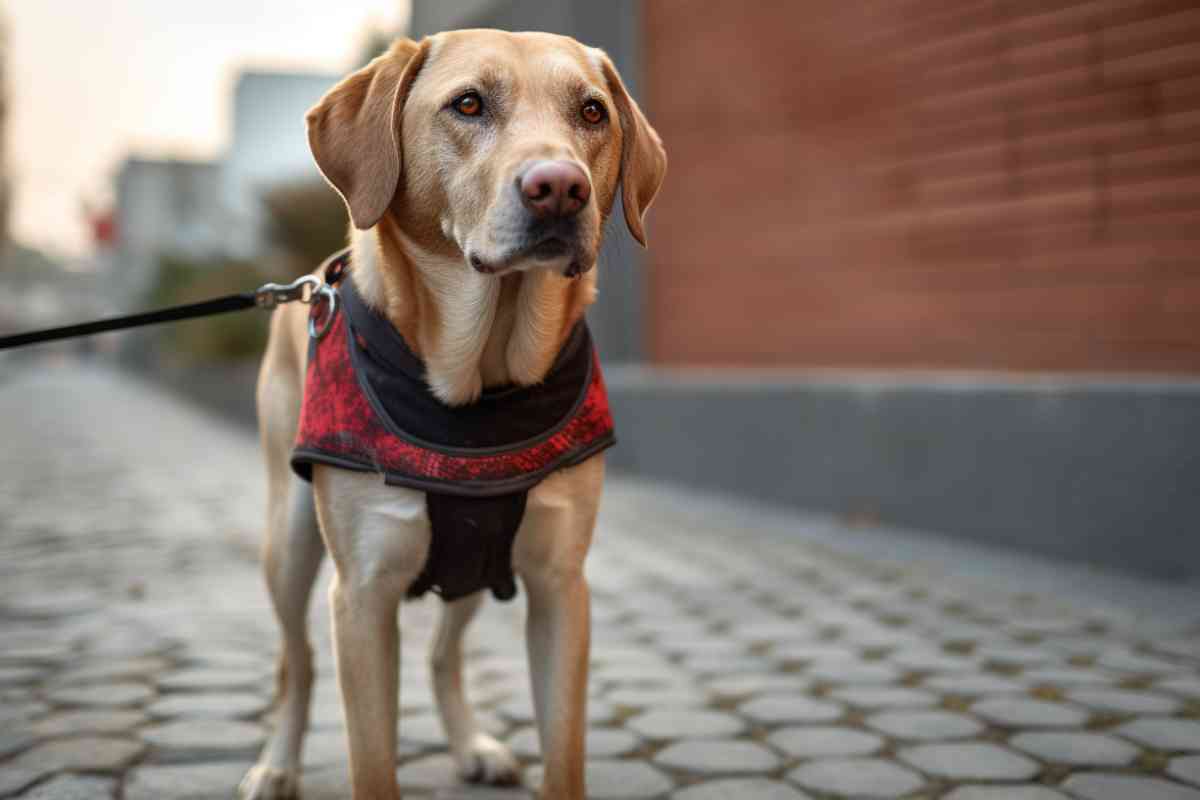
Development of the Labrador Retriever as a Working Dog
The Labrador Retriever’s natural hunting and retrieving instincts made it an ideal working dog. The breed’s intelligence, trainability, and adaptability have made it a popular choice for a variety of working roles, including hunting, retrieving, and herding.
Labrador Retrievers are highly skilled at hunting and retrieving game, and they excel in the shooting field. They are often used to retrieve ducks, geese, and other game birds. Their excellent sense of smell allows them to track and retrieve wounded game.
In addition to hunting, Labrador Retrievers are also used as working retrievers for search and rescue operations, as guide dogs for the blind, and as therapy dogs in hospitals and nursing homes.
Labrador Retrievers as Service Dogs
Labradors: The Service Dog Par Excellence
When it comes to service dogs, the Labrador Retriever stands out as a breed of choice for many organizations, including Assistance Dogs Australia. But what makes this breed so special in the realm of service?
Innate Motivation and Drive
Labradors have an intrinsic motivation that can be channeled through food, toys, or simply human attention. This ensures they are always eager to follow cues, making them reliable companions in various tasks and situations.
Gentle Yet Efficient
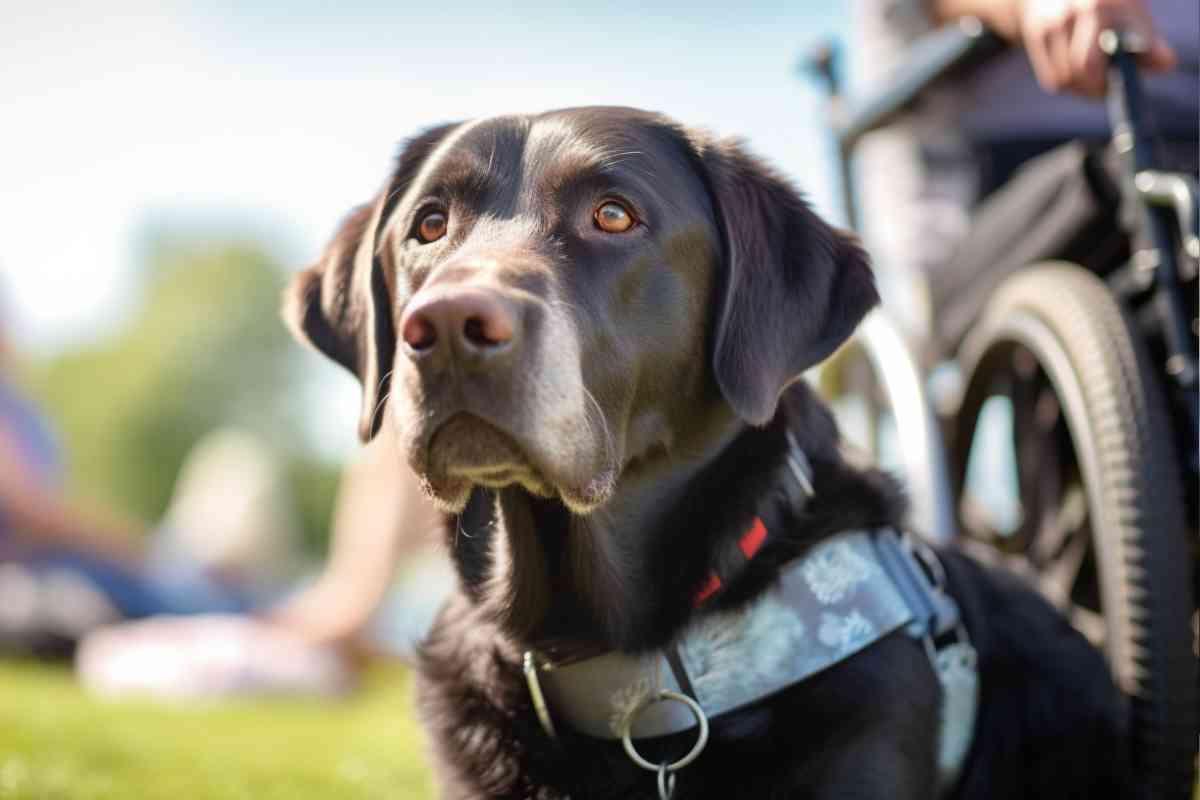
One of the standout features of Labradors is their soft mouths. This allows them to pick up and handle delicate items, such as mobile phones, without causing any damage. It’s a trait that’s especially beneficial for individuals with physical disabilities, ensuring that dropped items can be safely retrieved.
Balancing Energy with Intelligence
Labradors strike a perfect balance with their energy levels. They’re enthusiastic and ready to perform tasks but don’t require excessive motivation. Coupled with their remarkable intelligence, they can learn and execute multiple tasks efficiently, making them invaluable in service roles.
A Sociable and Confident Companion
Their kind, loving, and inherently social nature ensures Labradors integrate seamlessly into various environments. Moreover, their confidence around unfamiliar situations and noises means they remain composed, ensuring their human companions always feel secure.
Health and Longevity
With relatively fewer genetic medical issues, Labradors promise a longer and healthier service life. Their early maturity and commendable life expectancy mean they provide extended years of unwavering service.
Practicality in Size and Maintenance
Labradors come with an easy-to-maintain short coat, reducing grooming hassles. Their optimal size and weight make them agile and adept, ensuring they can perform practical skills without being cumbersome.
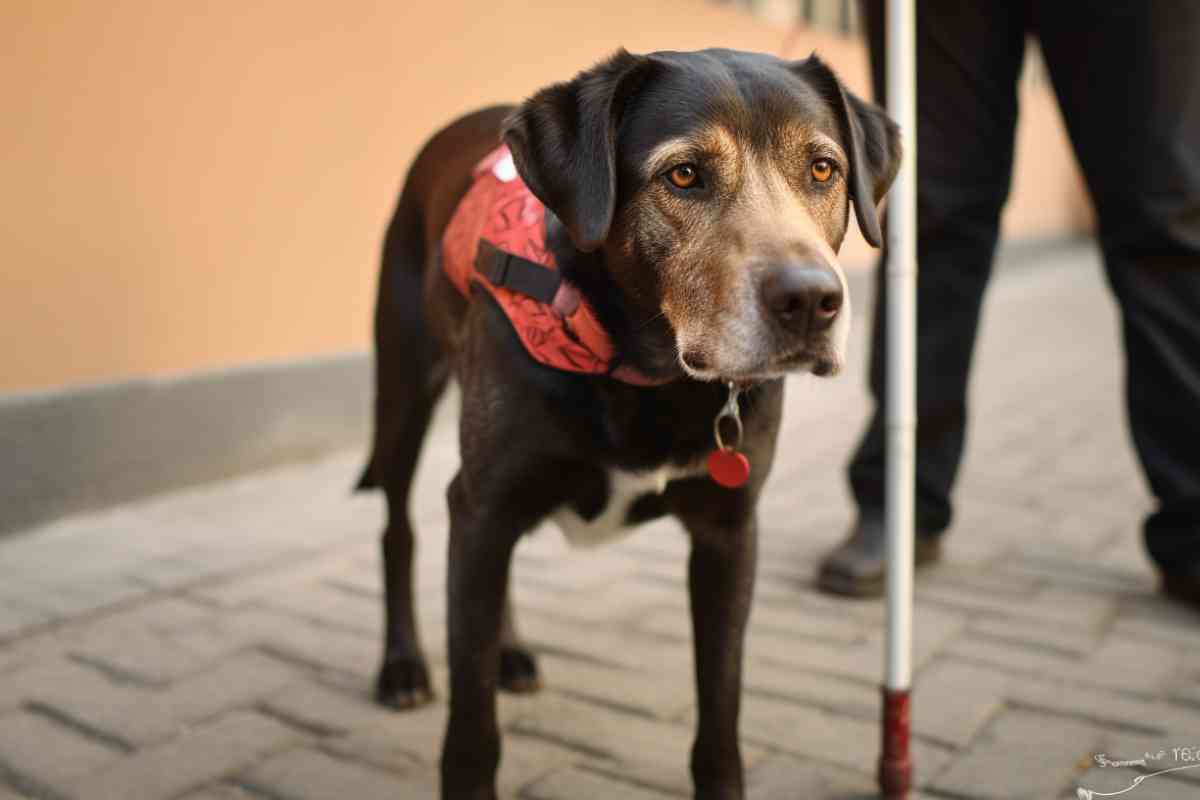
Types of Service Dogs
There are several different types of service dogs, including guide dogs, hearing dogs, mobility dogs, medical alert dogs, and psychiatric service dogs. Each type of service dog is trained to perform specific tasks to assist their handler with their disability.
- Guide dogs are trained to assist individuals who are blind or visually impaired by leading them around obstacles and guiding them to their destination.
- Hearing dogs are trained to alert their handler to sounds, such as a doorbell or a fire alarm.
- Mobility dogs assist individuals with limited mobility by retrieving items, opening doors, and providing balance support.
- Medical alert dogs are trained to detect changes in their handler’s body, such as low blood sugar levels or seizures, and alert them or others in the area.
- Psychiatric service dogs assist individuals with mental health conditions, such as anxiety or PTSD, by providing emotional support and performing tasks to alleviate symptoms.
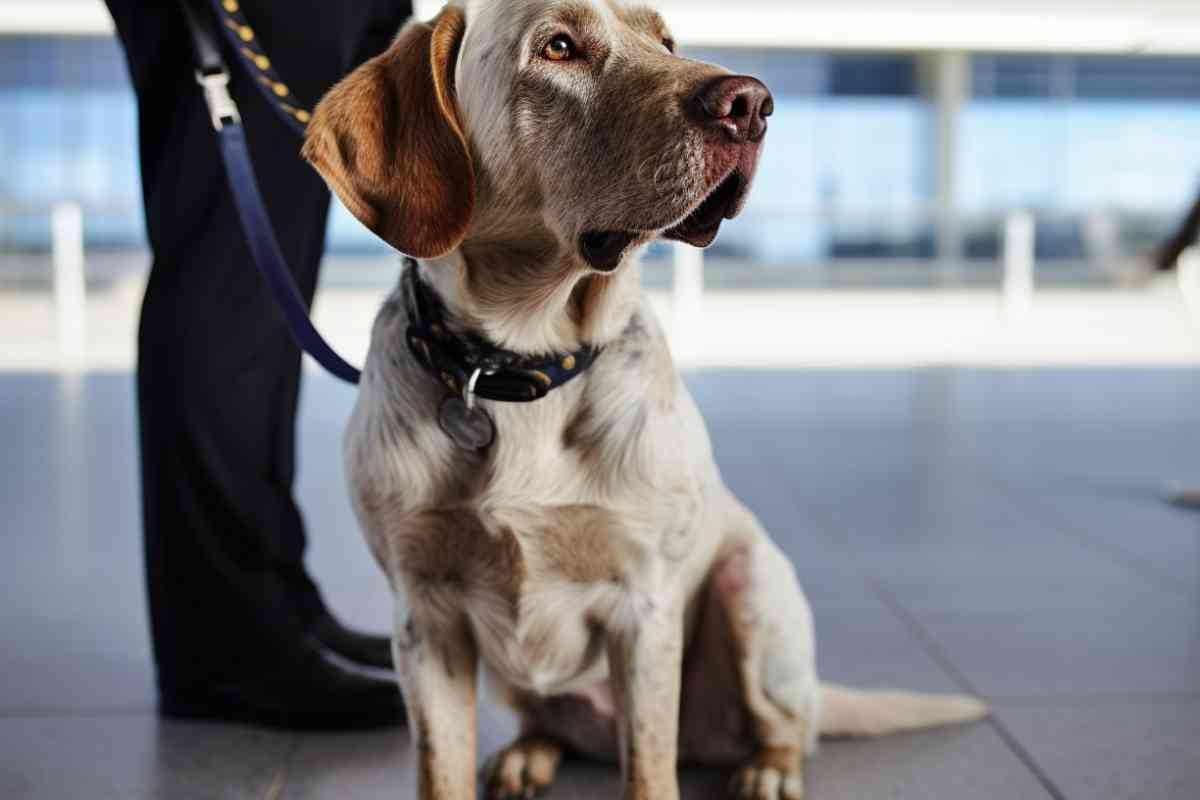
Training Labrador Retrievers as Service Dogs
Training a Labrador Retriever as a service dog requires a significant amount of time, effort, and patience. The training process typically involves basic obedience training, task-specific training, and public access training.
- Basic obedience training teaches the dog to follow commands such as sit, stay, and come.
- Task-specific training involves teaching the dog to perform specific tasks related to their handler’s disability, such as retrieving items or alerting to sounds.
- Public access training teaches the dog to behave appropriately in public places and to ignore distractions.
It is important to note that under the Americans with Disabilities Act, service dogs are allowed access to public places with their handler. However, it is the responsibility of the handler to ensure that their dog is well-behaved and does not pose a threat to others.
Labrador Retrievers as Hunting Dogs
Labrador Retrievers are one of the most popular breeds of dog for hunting. Their excellent noses, strong retrieving ability, and love for water make them ideal for hunting waterfowl. Here are some things to know about hunting with Labrador Retrievers and training them as hunting dogs.
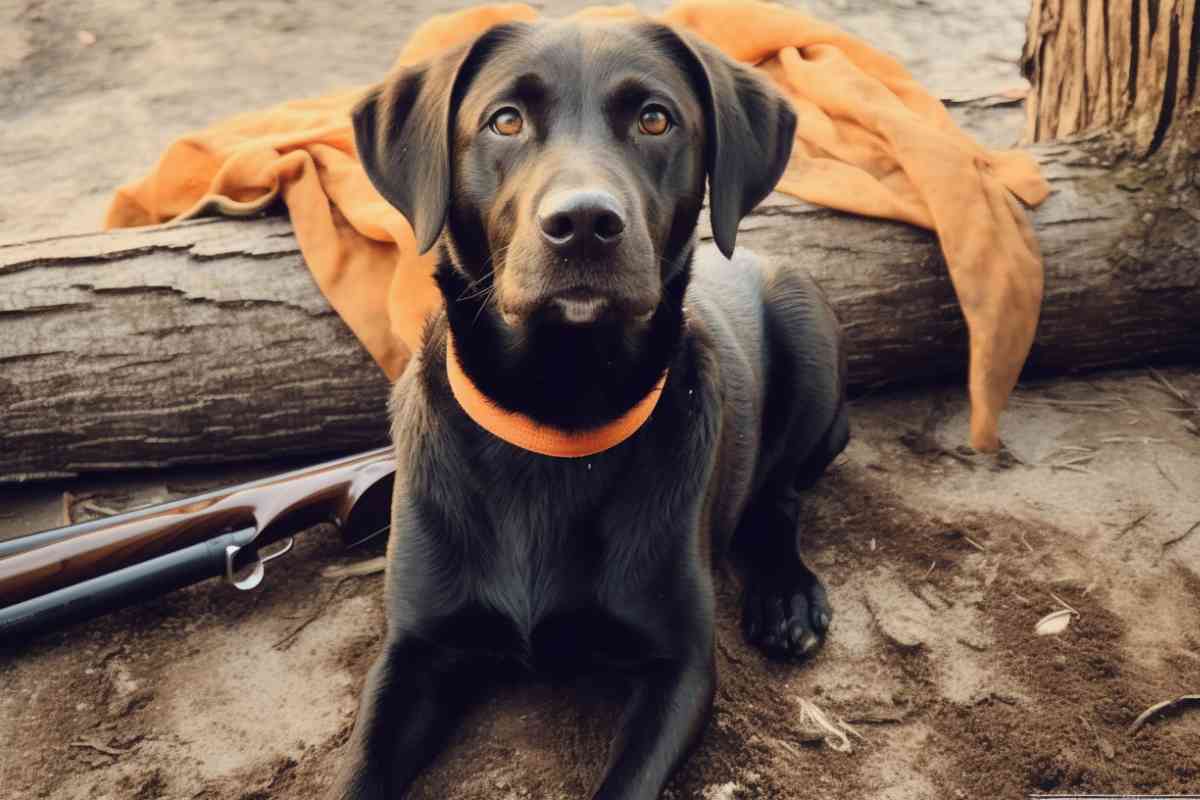
Labradors: The Quintessential Hunting Companions
The Labrador Retriever, recognized by the American Kennel Club as the top sporting breed, is not just a family favorite but also a formidable hunting companion. Their ubiquitous presence across the U.S. is a testament to their adaptability, athletic prowess, and endearing nature.
Why Labradors Are Exceptional Hunting Dogs
Labradors are celebrated for their “work hard, play hard” attitude, making them ideal sporting dogs. Their natural retrieving instincts equip them to hunt upland birds with flair. However, it’s in the duck blind where they truly excel. Their thick double coat, combined with a medium-to-large build, prepares them for cold, wet hunts. The webbed paws, muscular physique, and rudder-like tail classify them among the top swimmers of water dog breeds. Whether it’s their alertness in spotting game or their resilience in challenging terrains, Labradors consistently prove their worth in the field.
Training Your Labrador for Hunting
- Start Early: Begin training when your Labrador is still a pup. Early exposure to various situations between 7 weeks and 4 months of age can foster confidence.
- Desensitization: Acquaint your Labrador with the sound of a rifle. Discreetly firing a starting pistol can help them get used to the noise they’ll encounter during hunts.
- Simulated Hunts: Use tools like a blood-soaked deer foot attached to a fishing rod to simulate a hunt. This helps them track methodically.
- Command Mastery: Ensure your Labrador is proficient in commands like ‘stop,’ ‘recall,’ and ‘hunt.’ This is crucial for safety and efficiency during hunts.
- Socialization: Labs are inherently social. Enroll them in puppy training classes and expose them to varied situations to enhance their sociability.
- Activity and Exercise: Labradors require daily exercise to keep their mind and body engaged. Activities like retrieving games, dock diving, and trail hiking can keep them active and hone their hunting skills.
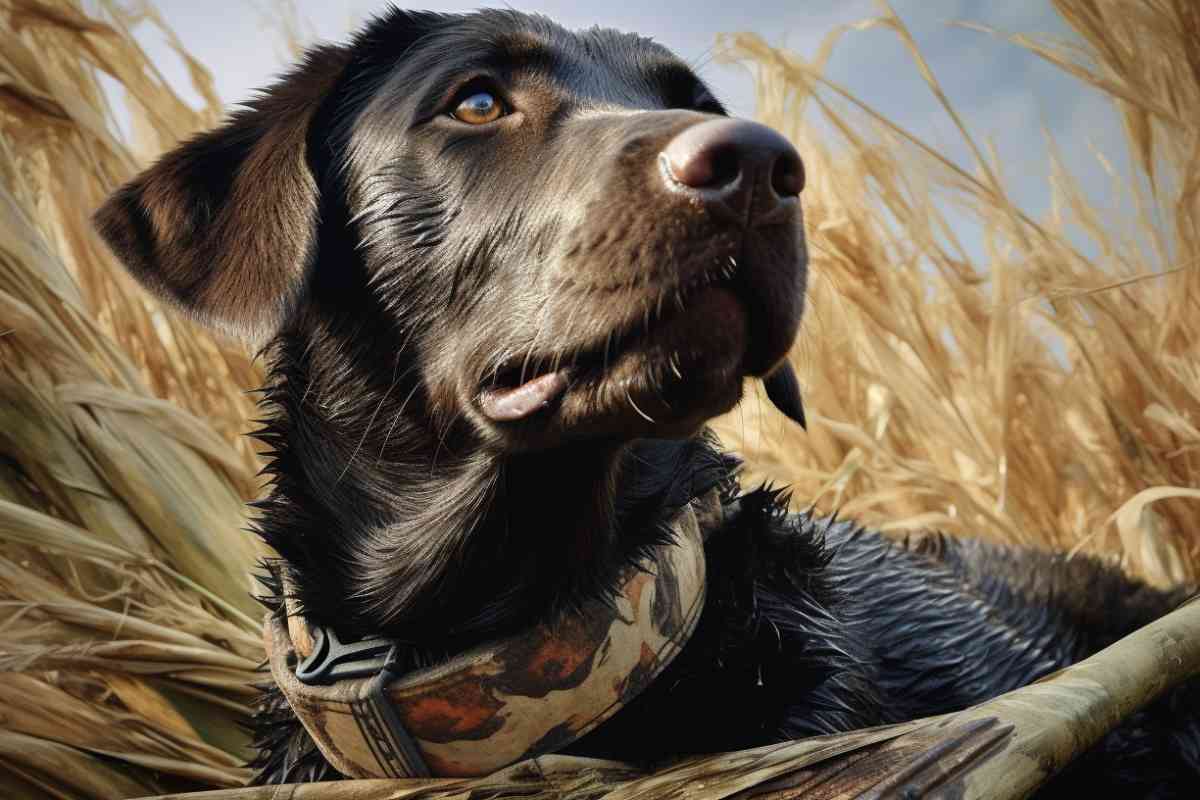
Choosing the Right Labrador for Hunting
Under the broad category of Labradors, there are two primary sporting lines: the American Labrador and the British Labrador. While American labs are bred for high-octane performance, British labs are tailored for ideal manners and calmness in the field.
Depending on your hunting style and requirements, you can choose between these lines. It’s also essential to ensure that the Labrador you choose is bred for hunting and not as a pet, support animal, or show dog. A quality hunting-bred puppy might come at a premium, but it’s an investment in healthy and efficient bloodlines.
Conclusion: Labradors – A Lifetime Hunting Partner
For many, once they’ve experienced hunting with a Labrador, no other breed compares. Their blend of hard work, affection, and adaptability makes them an unparalleled choice for hunting enthusiasts. Whether you’re a seasoned hunter or just starting, a Labrador can enhance your hunting experience, offering both companionship and expertise in the field.
Labradors: The Unsung Heroes of Deer Stalking
Deer stalking is a revered tradition, and while many might think of specialist breeds when considering a canine companion for the task, the humble Labrador has proven to be an exceptional choice. Labradors, known for their versatility in various fieldsports, have shown that their skills are perfectly transferable to the world of deer stalking.
Why Labradors Excel in Deer Stalking
Labradors bring a unique set of attributes to deer stalking. Their acute sense of smell allows them to detect even the faintest scent of deer, making them invaluable during hunts. Their trainability ensures they can be taught specific tasks with ease, and their calm demeanor means they can ignore live game until given a command.
This steadiness is vital in stalking, where silence and patience are paramount. Furthermore, Labradors have the ability to spot deer even before their human counterparts, enhancing the efficiency of the hunt. Their silent alerts, such as a sudden stop or a locked stance, can signal the presence of deer, making the experience collaborative and harmonious.
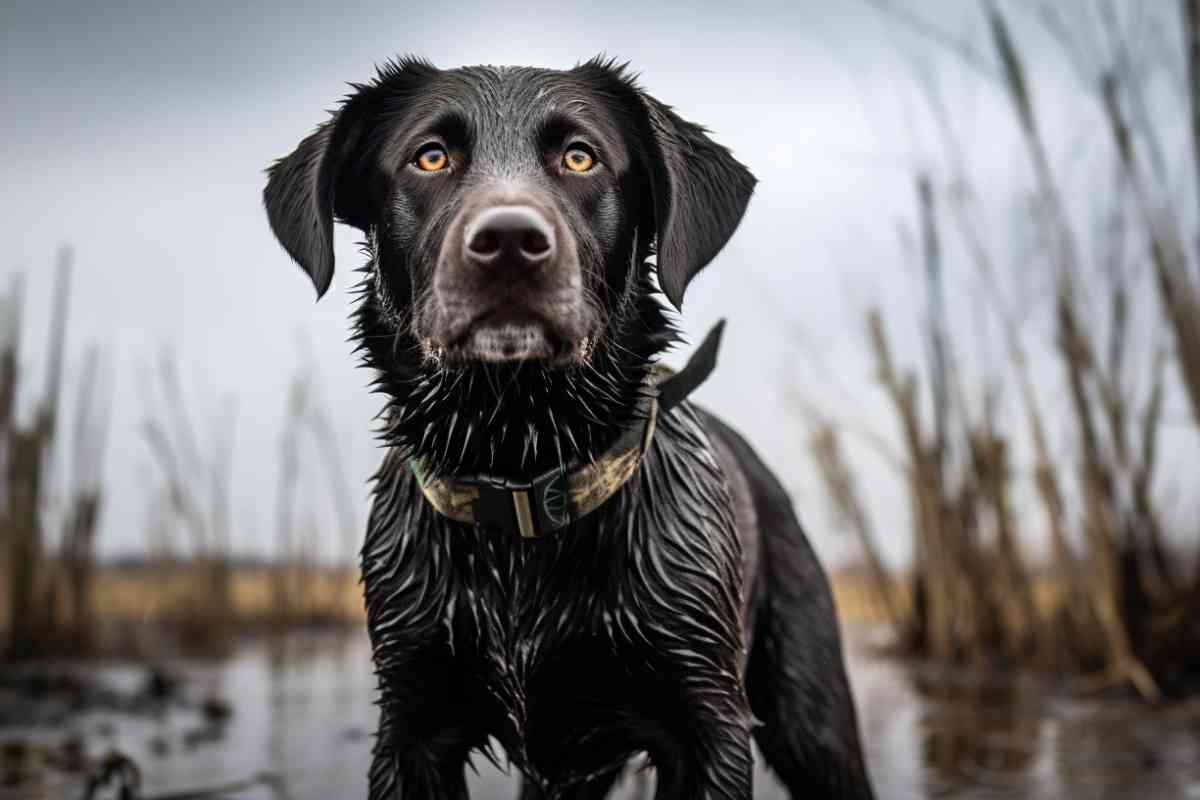
Training Your Labrador for Deer Stalking
- Desensitization: Start by desensitizing your Labrador to the sound of a rifle. Using a starting pistol, discreetly fire it while ensuring the dog doesn’t see it. This prepares them for the actual sound of a rifle during stalking.
- Simulate Follow-Up: In a controlled environment, simulate a follow-up using a blood-soaked deer foot attached to a fishing rod. Cast the line and let your Labrador follow the scent, teaching them to track methodically.
- Command Training: Ensure your Labrador can respond to commands like ‘stop,’ ‘recall,’ and ‘hunt.’ This is crucial in situations where they might be tracking a deer and encounter potential dangers like roads or fences.
- Spotting Training: During walks, observe your Labrador’s reactions to wildlife. Reward them for silent alerts to the presence of animals, reinforcing the behavior.
- Handling Injured Game: While Labradors are gentle, it’s essential to prepare them for situations where they might encounter injured deer. Training them to bay or alert the hunter without engaging the animal is crucial.
Conclusion: Labradors – An Essential Companion in Deer Stalking
While specialized European breeds like the Bavarian mountain hound have their merits, the Labrador’s combination of skills, temperament, and trainability makes them an ideal choice for deer stalking. Their ability to seamlessly transfer their training from shooting fields to deer stalking landscapes is a testament to their adaptability and prowess. For those looking to enhance their deer stalking experience, a well-trained Labrador can prove to be an invaluable companion.
Why Labradors Excel in Shed Hunting
Labradors, renowned for their acute sense of smell, have a natural ability to detect shed antlers even when they’re hidden amidst dense foliage or in covered terrains. Their eagerness to please, combined with their high trainability, ensures that they can be taught specific tasks with relative ease.
Their robust build and vast energy reserves equip them to cover extensive areas, a trait indispensable for shed hunting where the search can span large distances. Furthermore, Labradors are known for their soft mouth, a characteristic that ensures the antlers they retrieve remain undamaged, preserving their value and integrity.
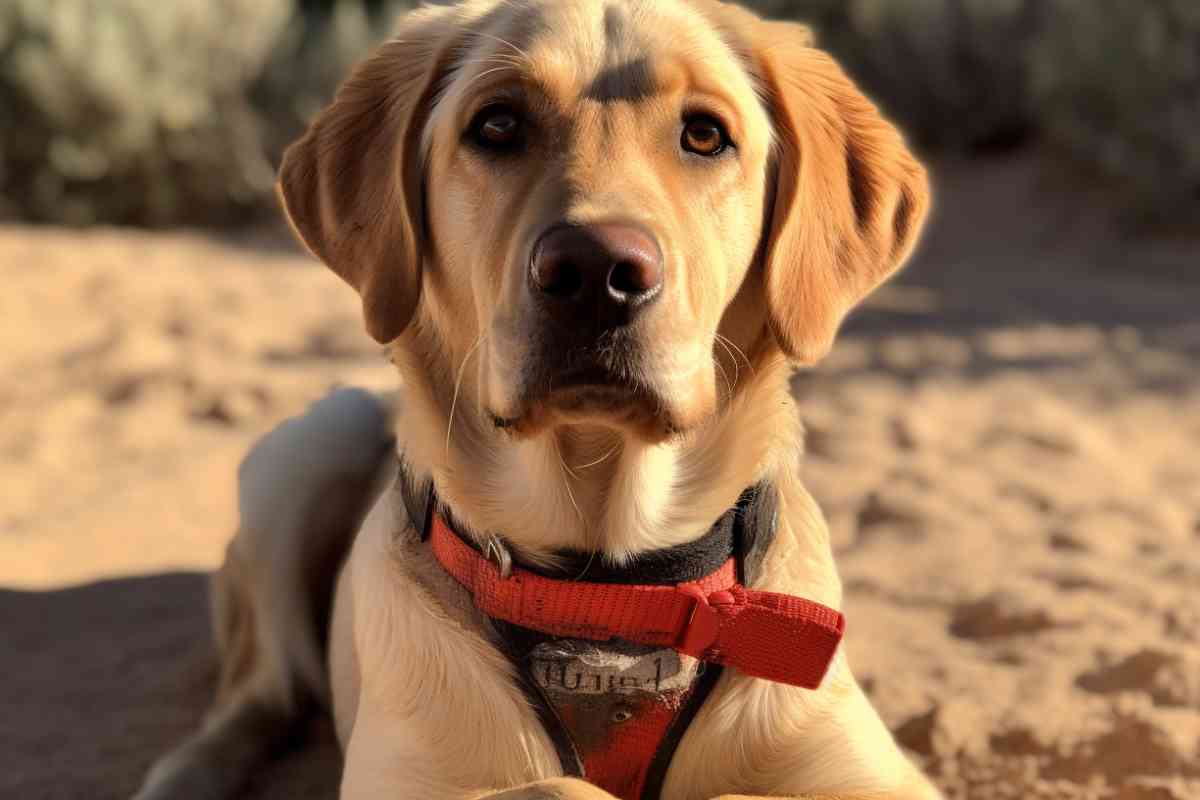
Training Your Labrador for Shed Hunting
- Familiarization: Begin by letting your Labrador familiarize itself with antlers. Allow them to sniff and play with it, creating a positive association.
- Basic Commands: Ensure your Labrador is well-versed with basic commands like ‘sit,’ ‘stay,’ ‘come,’ and ‘fetch.’ This forms the foundation for more specialized training.
- Fetch with Antlers: Replace the usual fetch toys with antlers. This helps them recognize the scent and shape of the antler.
- Hide and Seek: Start hiding the antler in easy-to-find places, gradually increasing the difficulty as your Labrador gets better at locating them.
- Field Training: Once your Labrador is consistently finding hidden antlers, it’s time to move the training outdoors. Start in a controlled environment before progressing to larger, more natural settings.
- Positive Reinforcement: Always reward your Labrador for a job well done. Treats, praises, or playtime can be effective rewards.
Labrador Retrievers as Search and Rescue Dogs
Labrador Retrievers are highly intelligent and have excellent tracking abilities, which makes them ideal for search and rescue operations.
Types of Search and Rescue Dogs
There are several types of search and rescue dogs, including air-scenting dogs, tracking dogs, and cadaver dogs. Air-scenting dogs are trained to search for human scent in the air, while tracking dogs follow a specific scent on the ground. Cadaver dogs are trained to locate human remains.
Labrador Retrievers are often used as air-scenting dogs because of their excellent sense of smell. They can detect human scent from a distance of up to two miles, making them ideal for search and rescue operations in open areas.
Training Labrador Retrievers as Search and Rescue Dogs
Training Labrador Retrievers as search and rescue dogs requires a lot of time and effort. It is important to start the training process early, as puppies as young as 8-10 weeks old can begin their training.
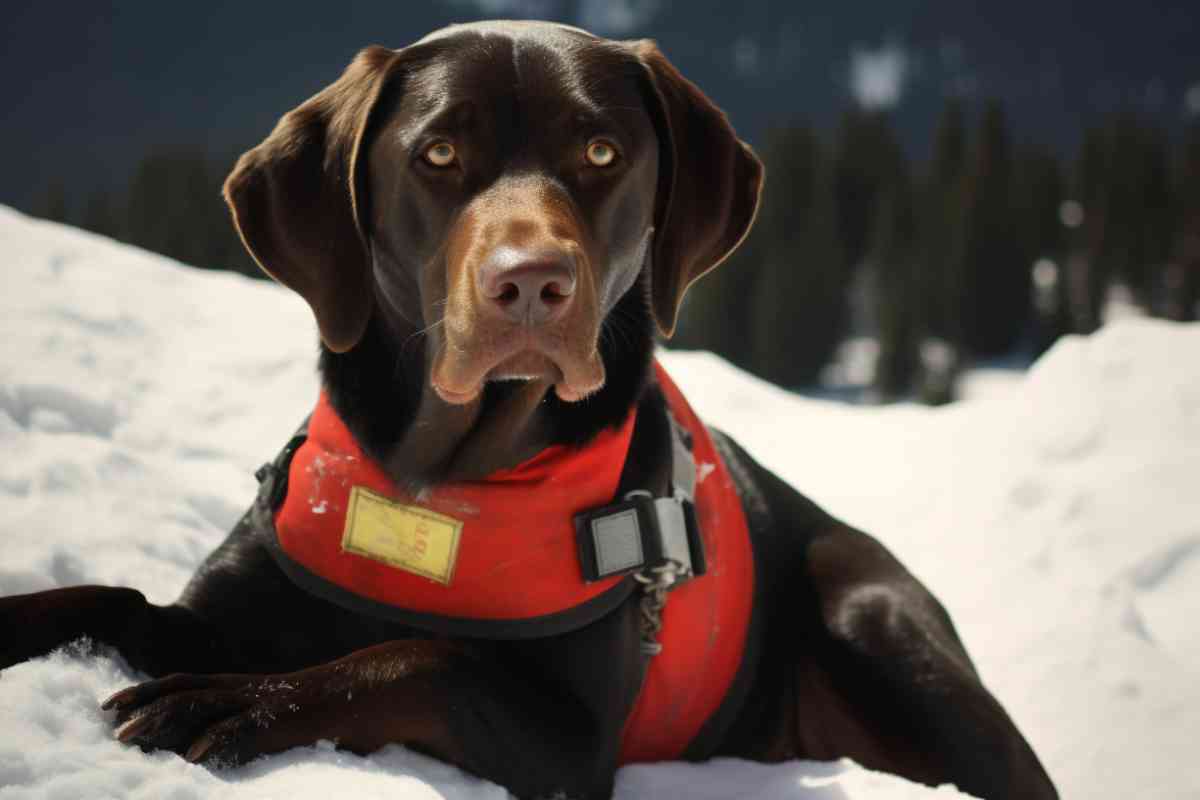
Socialization is crucial for search and rescue dogs, as they need to be comfortable around people and other animals. It is also important to provide them with plenty of exercise to keep them physically fit and mentally stimulated.
Tracking and scent training are also important for search and rescue dogs. They need to be able to follow a specific scent and locate a person in a timely manner. Handlers also need to train the dogs to work in different environments, such as in water or in rugged terrain.
In conclusion, Labrador Retrievers make excellent search and rescue dogs due to their friendly and social nature, excellent sense of smell, and tracking abilities. However, training them for this role requires a lot of time and effort, and it is important to start the training process early to ensure success.
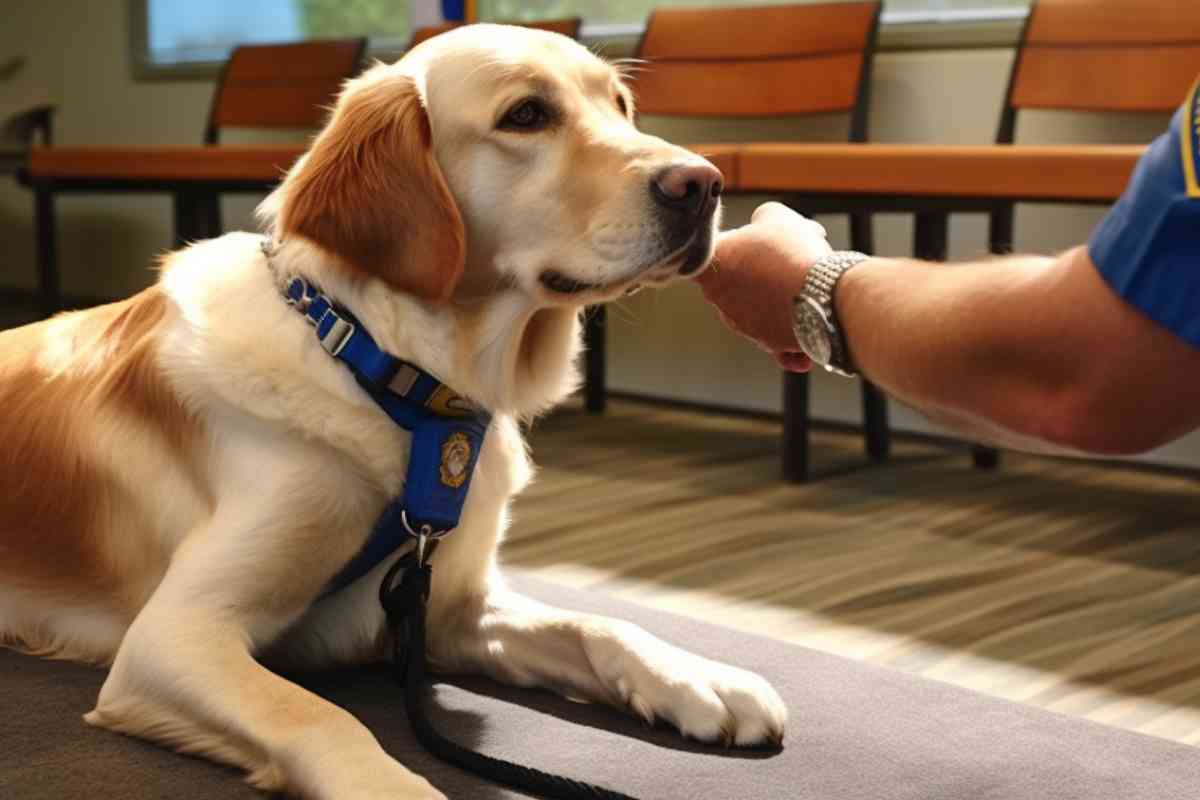
Labrador Retrievers as Detection Dogs
Labrador Retrievers are versatile and intelligent dogs that make excellent detection dogs. They have a keen sense of smell and are able to detect a wide range of substances, including explosives, drugs, and truffles. In this section, we will discuss the different types of detection dogs and how Labrador Retrievers are trained to become successful detection dogs.
Types of Detection Dogs
There are several types of detection dogs, including:
- Explosive detection dogs: These dogs are trained to detect explosives and are commonly used by law enforcement agencies and the military.
- Drug detection dogs: These dogs are trained to detect illegal drugs and are commonly used by law enforcement agencies.
- Tracking dogs: These dogs are trained to track humans or animals and are commonly used by law enforcement agencies and search and rescue teams.
Labrador Retrievers are commonly used as explosive detection dogs and drug detection dogs due to their high energy levels, intelligence, and ability to work in a variety of environments.
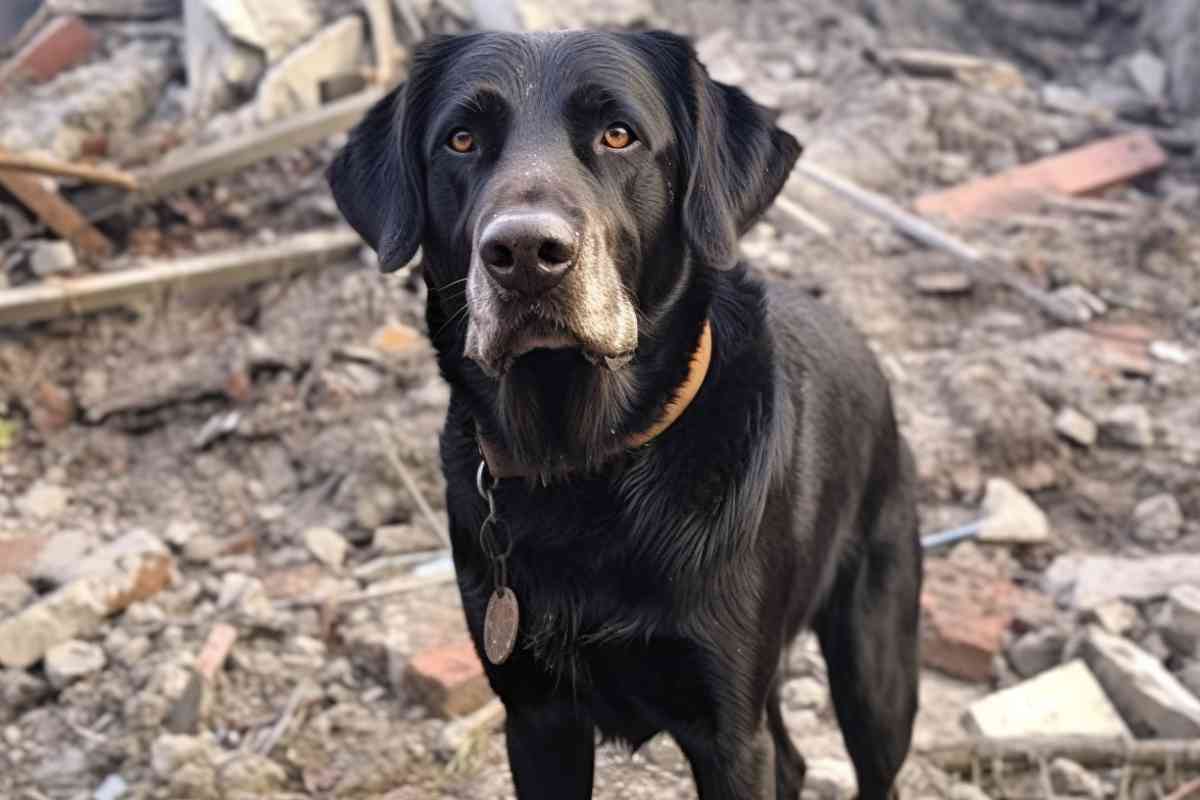
Training Labrador Retrievers as Detection Dogs
Training a Labrador Retriever as a detection dog is a highly specialized process that requires patience, dedication, and a lot of hard work. The training process typically involves several stages, including:
- Basic obedience training: This involves teaching the dog basic commands such as sit, stay, and come.
- Scent detection training: This involves teaching the dog to recognize and alert to the scent of the target substance.
- Scenario-based training: This involves exposing the dog to a variety of scenarios in which they may encounter the target substance, such as searching a vehicle or a building.
During the training process, Labrador Retrievers are typically rewarded with treats or toys when they successfully detect the target substance. This positive reinforcement helps to reinforce the behavior and encourages the dog to continue working.
Labrador Retrievers as Therapy Dogs
Labrador Retrievers are friendly and outgoing , which makes them perfect for providing emotional support and comfort to people in need. In this section, we will discuss the different types of therapy dogs and how Labrador Retrievers can be trained for this role.
Types of Therapy Dogs
- Emotional Support Dogs: These dogs provide emotional support to people with mental health conditions such as anxiety and depression.
Therapy Dogs: These dogs are trained to provide comfort and emotional support to people in hospitals, nursing homes, schools, and other settings.
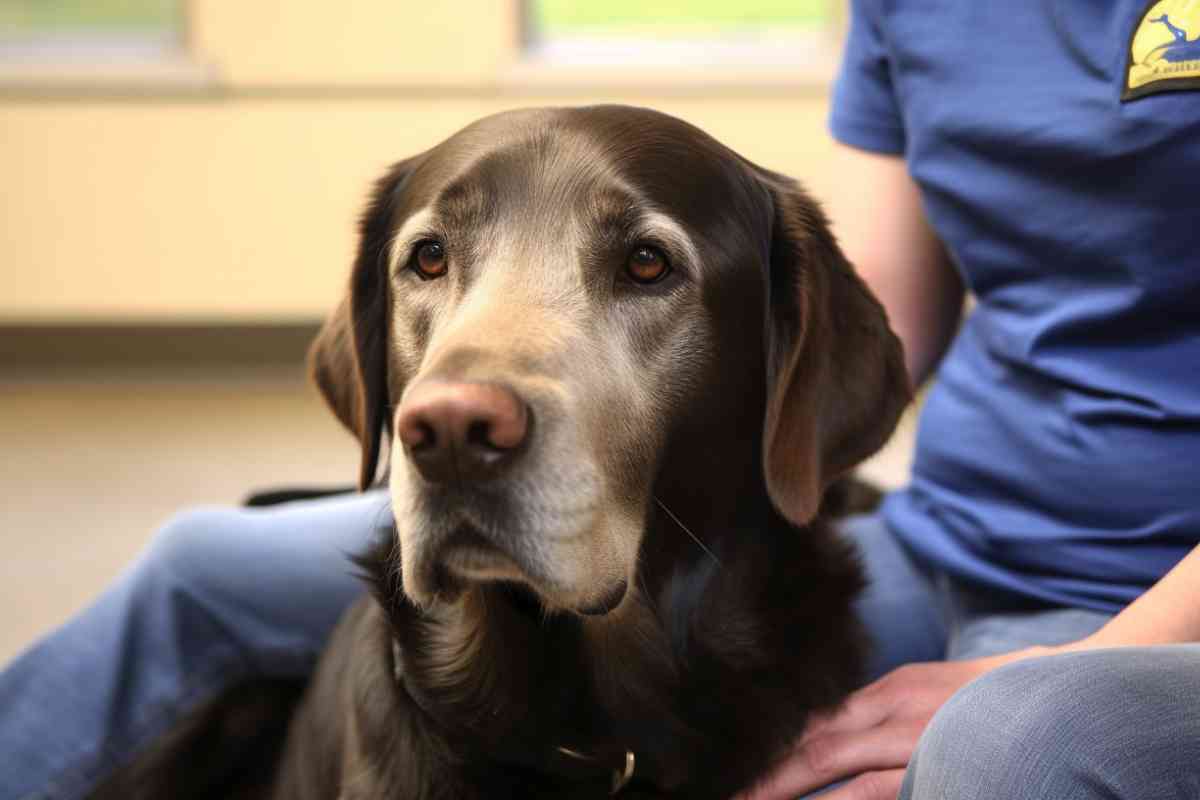
Training Labrador Retrievers as Therapy Dogs
Training a Labrador Retriever as a therapy dog requires patience, consistency, and positive reinforcement. The dog needs to be well-behaved, obedient, and able to follow commands. Some of the training techniques used to train therapy dogs include:
- Socialization: The dog needs to be socialized from a young age to interact well with people and other animals.
- Obedience Training: The dog needs to learn basic obedience commands such as sit, stay, come, and heel.
- Desensitization: The dog needs to be desensitized to different environments and situations to reduce stress and anxiety.
Labrador Retrievers are quick learners and respond well to positive reinforcement. With proper training, they can become excellent therapy dogs, providing comfort and support to people in need.
Jobs Labs DON’T Do
- Guard Dogs: While Labradors, whether they’re black labs, chocolate labs, or yellow labs, are among the most popular dog breeds in America and Canada, they are not typically used as guard dogs. Their friendly and approachable temperament, a trait that makes them excellent family pets, means they lack the aggression or suspicion towards strangers that’s often required in a guard dog.
- Herding Dogs: The Labrador breed, despite its popularity, did not originate as a herding breed. Unlike breeds with a narrower head and agile build designed for herding, Labradors were bred for retrieving, especially in water, thanks to their dense coat and webbed paws.
- Sled Dogs: Labradors, even with their lineage tracing back to the lesser Newfoundland, are not built for the rigorous demands of sled pulling. Their build and fur, while dense, are not suited for the extreme cold conditions and the specific endurance required for sled work.
- Terrier Jobs: Labradors, given their size, are not suited for jobs typically reserved for terriers, such as ratting or burrowing after small game. Their size and build, unlike terriers with sharp teeth and strong nails, don’t allow for the agility needed in tight spaces.
- High-Altitude Rescue: While Labradors are healthy dogs and excellent swimmers, they are not typically trained for high-altitude mountain rescues. Breeds like the Saint Bernard, with a history rooted in alpine rescues since the 1880s, are more adapted to these conditions.
- Show Dogs Focused on Aesthetics: While many Labradors do participate in dog shows, not all are bred for this purpose. A responsible breeder might focus more on health traits, ensuring the lineage is free from issues like hip dysplasia, elbow dysplasia, progressive retinal atrophy, and other hereditary problems. Thus, while a Labrador might have a lineage free from eye problems or EIC (Exercise Induced Collapse), it might not meet the aesthetic standards of certain show rings.
- Specialized Scent Detection: While Labradors have an excellent sense of smell, certain jobs requiring specialized scent detection, like truffle hunting, are typically reserved for breeds like the Lagotto Romagnolo. However, it’s worth noting that Labradors are widely used in other scent detection roles, such as bomb and drug detection.
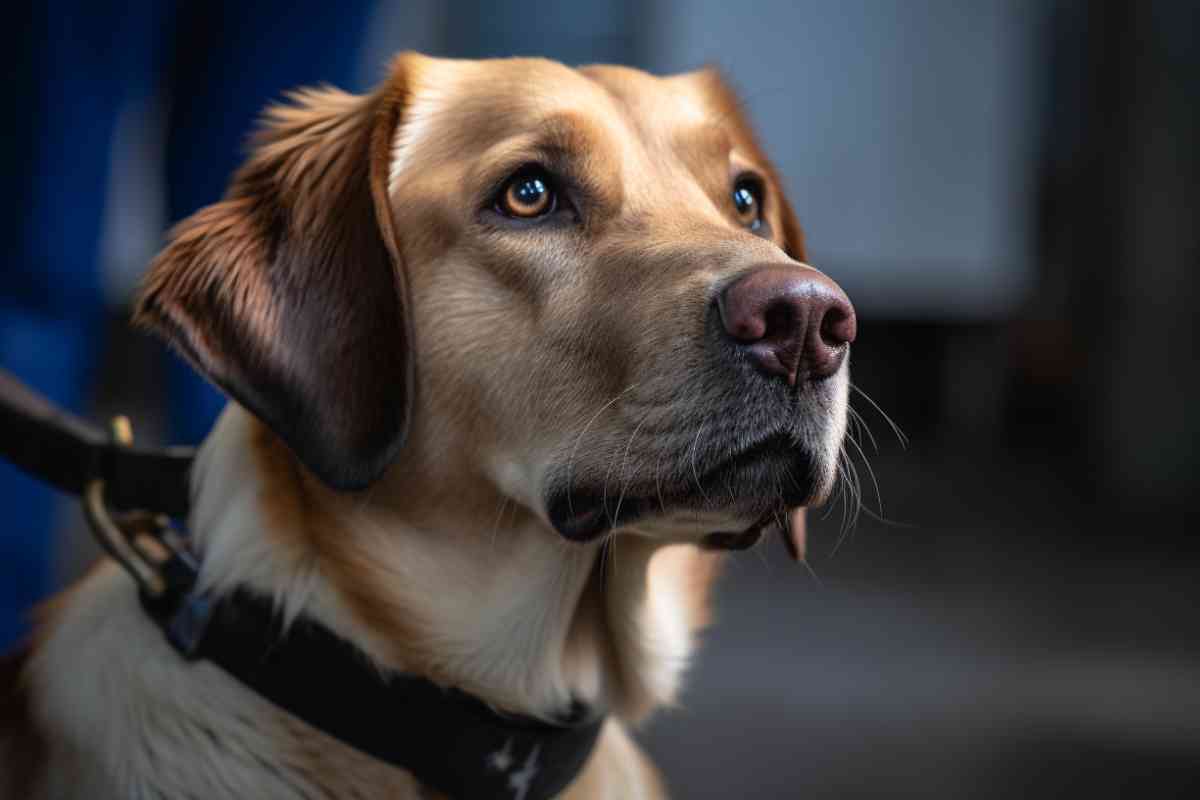
In conclusion, while the Labrador Retriever, with its roots tracing back to the Earl of Malmesbury, is a versatile and beloved breed, it’s essential to recognize the specific roles they excel in and those that are better suited for other breeds.


